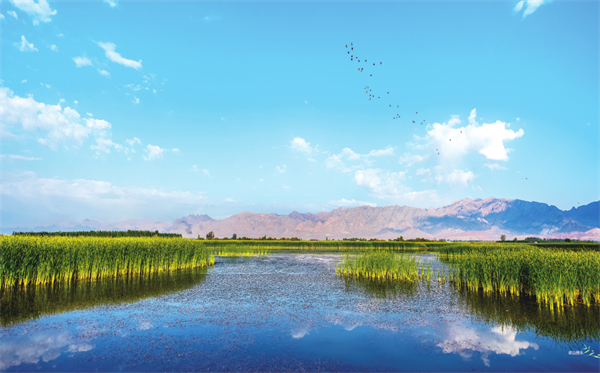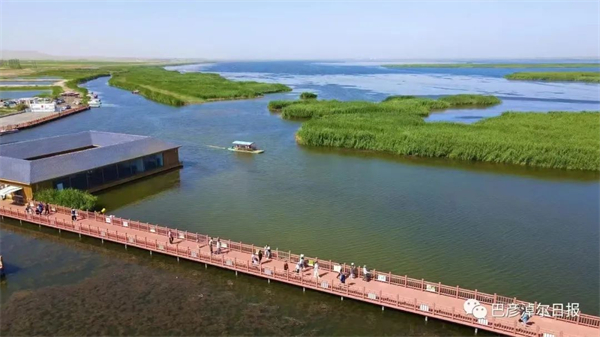Wuliangsu Lake transformation: From lake to watershed management

The breathtaking scenery of Wuliangsu Lake after comprehensive treatment. [Photo/Bayannuur Daily]
Wuliangsu Lake, located in Urad Front Banner, Bayannuur city, North China's Inner Mongolia autonomous region, now boasts clear blue skies and pristine waters.
"Over a decade ago, Wuliangsu Lake was nothing like it is today," said Ma Haiming, former head of the Wuliangsu Lake Wetland Waterfowl Nature Reserve Management Station.
As the largest freshwater lake in the Yellow River basin, Wuliangsu Lake had suffered from declining water quality due to excessive agricultural runoff, domestic sewage, and industrial wastewater.
"Initially, we focused solely on 'lake management', addressing issues as they arose without significant results," explained Zhao Weifeng, vice-mayor of Bayannuur city. "The terrain slopes from southwest to northeast, causing over 90 percent of agricultural runoff to flow into Wuliangsu Lake," Zhao added.
Bayannuur has since shifted from a narrow focus on lake management to a comprehensive watershed management approach, integrating the protection of mountains, rivers, forests, farmlands, lakes, grasslands, and deserts.

An aerial view of Wuliangsu Lake. [Photo/Bayannuur Daily]
"With the continuous improvement of sewage treatment plants and pipeline networks, all industrial wastewater upstream is now reused, and over 40 percent of domestic sewage is recycled, with the rest treated to meet standards before discharge," said Gao Zhanfei, deputy director of the Wuliangsu Lake Ecological Protection Center.
Urad Front Banner has promoted water and fertilizer integrated technology across 1.74 million mu (116,000 hectares), reducing water usage by over 30 percent and cutting fertilizer and pesticide use by about 20 percent, significantly decreasing agricultural source pollution.
Reed and aquatic plants are also being utilized effectively. "Last year, a new reed core board factory was established in the banner, with a production capacity of 200,000 metric tons, effectively utilizing Wuliangsu Lake's reed resources," Gao added.
Today, the ecological environment of the Wuliangsu Lake continues to improve. The total amount of pollutants entering the lake has decreased by 15.23 percent, the overall water quality of the lake has improved up to Grade V, and the water quality at the lake's center has reached Grade IV. The number of migratory and breeding bird species has increased to over 260, and fish species now number 29.

The irrigation facilities in fields neighboring Wuliangsu Lake. [Photo/Bayannuur Daily]



 Print
Print Mail
Mail


